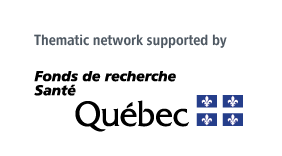Through the program of ThéCell Research Projets the network supports collaboration between members of the network and allows these research partnerships to develop new original research projects. To be admissible a project must comprise at least 3 members of ThéCell from at least two institutions.
The program exists since 2009. Currently ThéCell funds 6 projects for the duration of one year (from April 1st, 2019 to March 31st, 2020).
|
3D IPSC Culture Derived Human Muscle Stem Cells as Therapeutics for Muscular Dystrophy Most forms of muscular dystrophies (MDs) are lethal congenital pediatric disorders characterized by severe muscle weakness and a progressive loss of independent ambulation. MDs are accompanied by chronic muscle fiber degeneration, asynchronous multifocal inflammation, tissue scarring, and decreased |
|
Adoptive Transfer of Reprogrammed Macrophages: A Novel Therapeutic Approach of Donors to Protect Allografts From Tissue Injury! The shortage of organs has prompted research into new sources of organs such as donors after circulatory death (DCD). DCD organs are exposed to warm ischemia that induces inflammation associated with an increased risk of early dysfunction of transplanted organs. It is crucial to develop new therapies to protect them. We identified the factor Milk Fat Globule Growth Factor-8 (MFG-E8) as an anti-inflammatory modulator of macrophages. It is not known whether treatment of MFG-E8-treated macrophages (Mf-MFG-E8) would reduce tissue insult in DCDs. Our hypothesis is that the transfer of Mf-MFG-E8 protects organs |
|
Functional heterogeneity of mesenchymal stem cells derived from adipose tissue of healthy or dysmetabolic patients In the midst of a global obesity and type 2 diabetes epidemic, metabolic variability among individuals is likely to affect the therapeutic potential of stem cells (SC) derived from adipose tissues for autologous therapies. Such variability has never been systematically characterized using cutting-edge approaches allowing the identification of cellular subpopulations. Mesenchymal SC (MSC) can be obtained using two different approaches: 1) isolation of adipose-derived stem cells (ASC) from the stroma after collagenase digestion; or generation of dedifferentiated fat cells (DFAT) from mature adipocytes. Our objective is to characterize the functional variability of MSC obtained from human subcutaneous adipose tissues as a function of the isolation procedure (ASC vs. DFAT) and the metabolic status of the donor (normal glucose tolerance, impaired glucose tolerance or type 2 diabetes). Variability will be characterized at single-cell transcriptome standpoint (Obj. 1) and functionally (Obj. 2) by comparing their secretome, immunogenicity and global performance in culture (yield) and tissue engineering of autologous substitutes. Impact. The study of adipose tissue-derived MSC heterogeneity will allow the identification cell subpopulations affected by glucose intolerance or type 2 diabetes in order to establish strategies to maximize the therapeutic potential of cells coming from all donor types. |
|
The development of an efficient and safe gene therapy strategy for rececessive dystrophic and junctional epidermolysis bullosa Epidermolysis bullosa (EB) is a genetic disorder that manifests as a lack of adhesion between the dermis and the epidermis. It causes mucosa and epidermal detachments that can lead to severe complications such as ulcers, infections and cancers (carcinoma). Currently, the treatments offered are palliative, mainly with bandages to protect epithelial wounds. EB is characterized by mutations in different genes. The goal of the project is to develop an effective gene therapy |
|
Targeting muscle stem cells as a therapeutic approach to mitigate myotonic dystrophy type 1 Myotonic dystrophy type 1 (DM1) is the most frequent myopathy in humans. Muscle weakness and atrophy are cardinal signs of DM1 and muscle stem cells are also affected in this disease; they exhibit premature senescence, decreased proliferative capacity and delayed fusion and differentiation into myotubes. There is a high therapeutic potential for strategies targeting muscle stem cells in DM1; however, this avenue remains unexplored. Our goal is to investigate a therapeutic strategy targeting myogenic cell function as treatment for DM1 based on specialized pro-resolving mediators, named resolvins, which were shown by Dr Dumont to stimulate myogenic cell expansion and differentiation, and improve muscle regeneration in a model of dystrophic mdx mice. We will characterize the expression of resolvins along with inflammatory markers in skeletal muscles of patients with DM1 (deliverable 1), screen the impact of resolvins on myogenic cell function in vitro with cells isolated from DM1 skeletal muscles (deliverable 2) and in vivo using an animal model (deliverable 3). Overall, this project will characterize a novel therapeutic avenue targeting myogenic cells to rescue their function and mitigate DM1. |
|
Injectable biogel as local T cell-delivery system for cancer therapy : micro- versus macroencapsulation Cancer is one of the leading causes of death worldwide. Among the recent progresses in the fight against cancer is the injection of immune cells having the capacity to kill cancer cells, a treatment called adoptive cell transfer (ACT). This approach is however limited by several pitfalls, such as |




